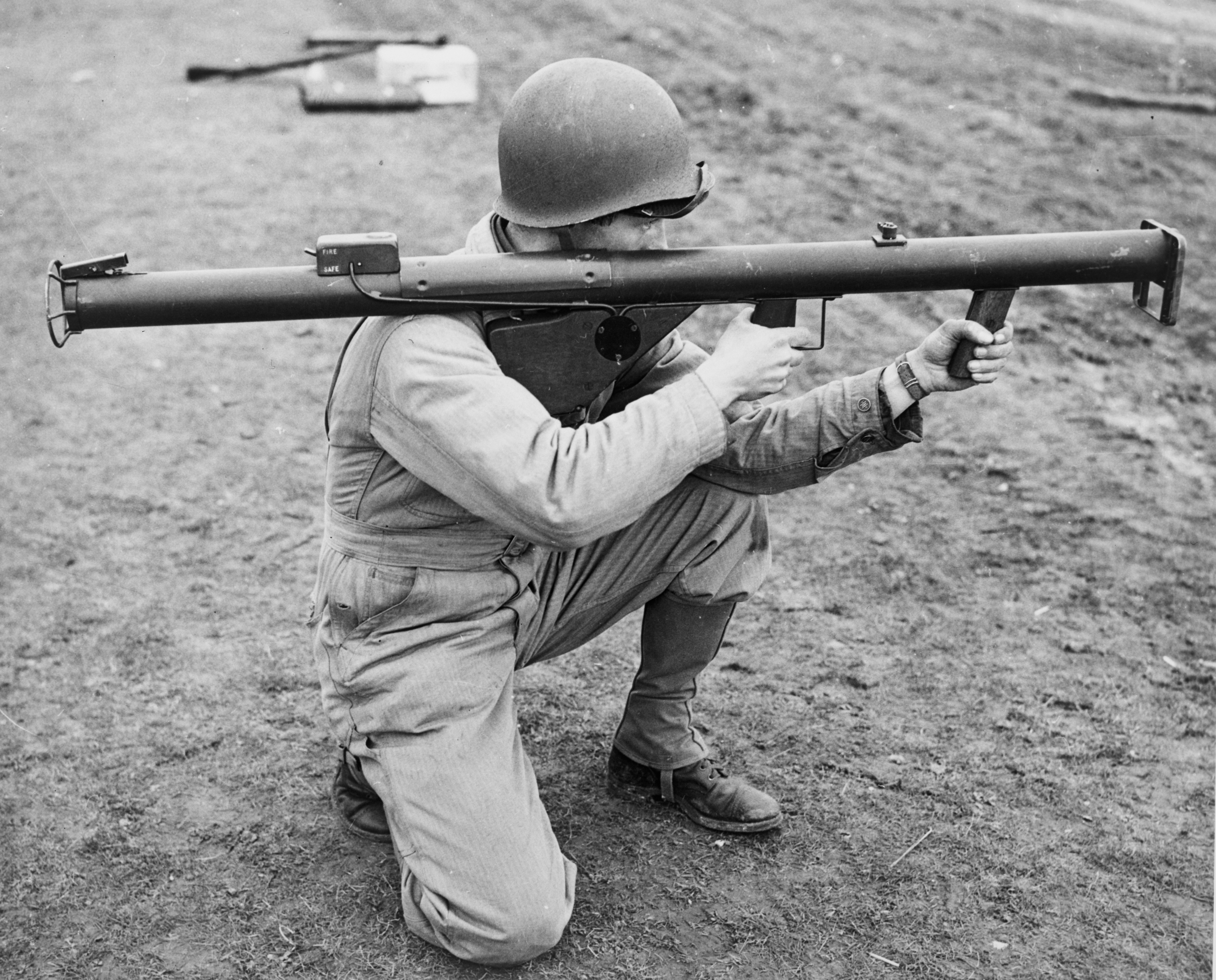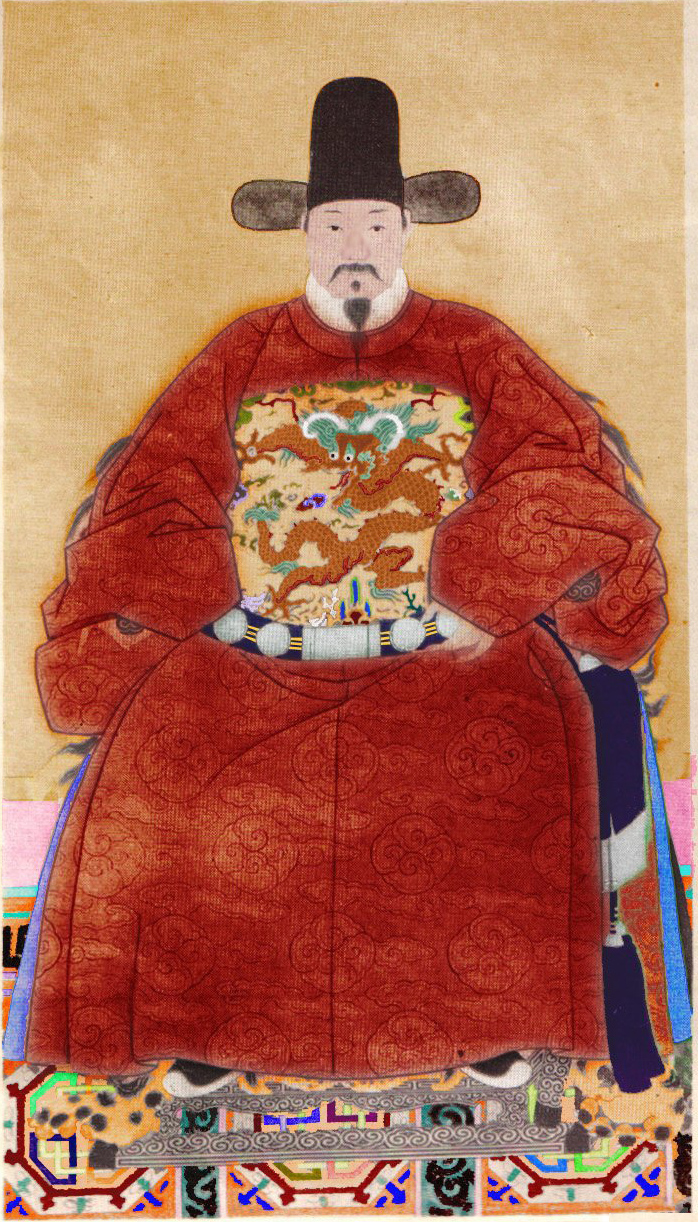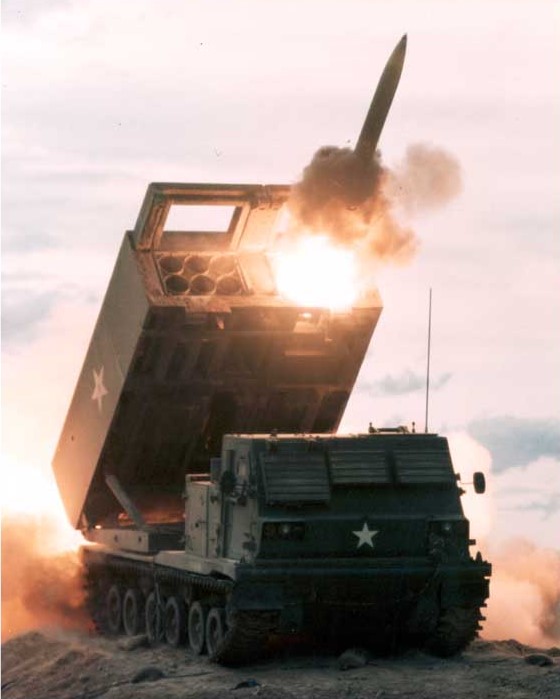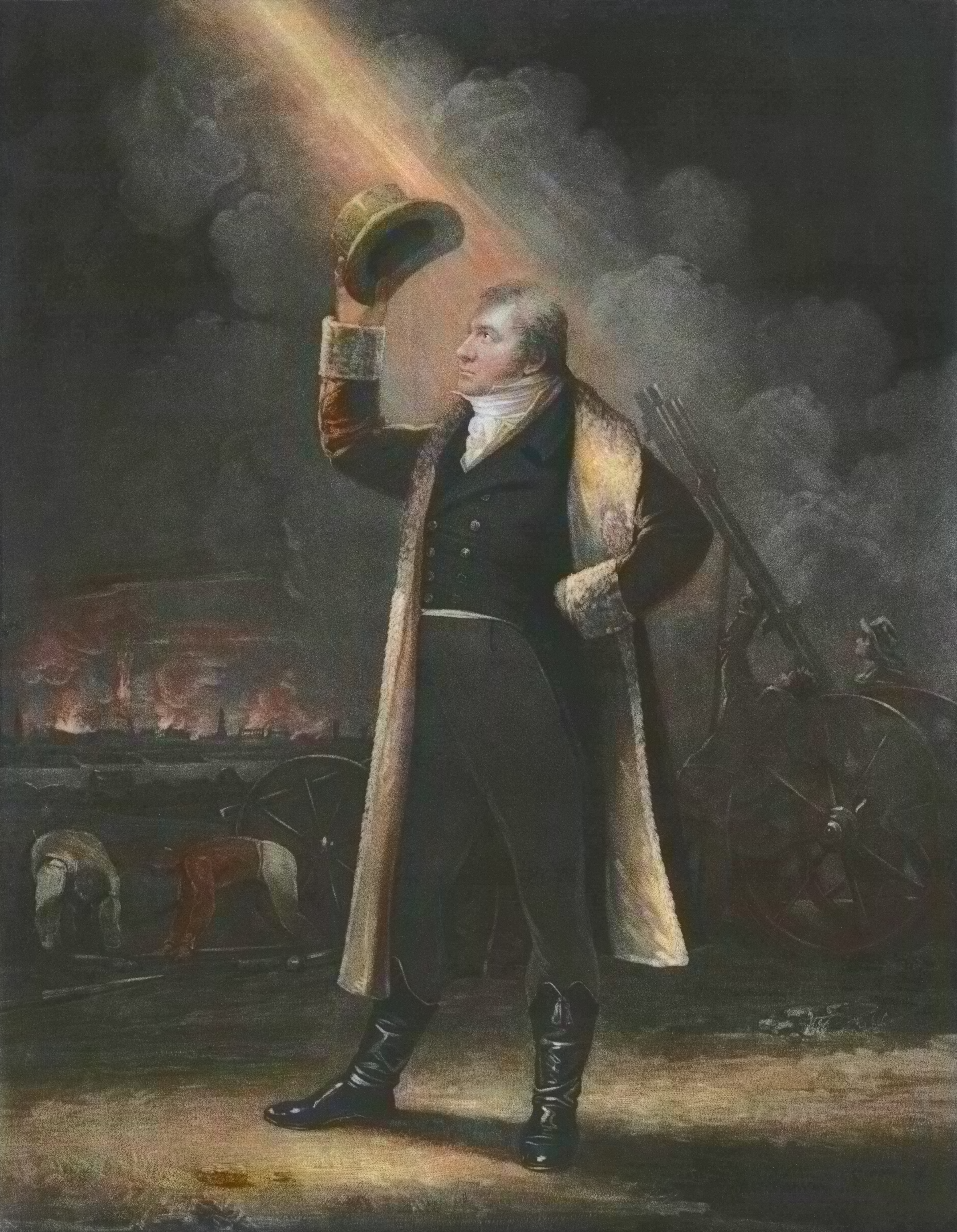|
Rocket Launcher
A rocket launcher is a weapon that launches an unguided, rocket-propelled projectile. History The earliest rocket launchers documented in imperial China consisted of arrows modified by the attachment of a rocket motor to the shaft a few inches behind the arrowhead. The rocket was propelled by the burning of the black powder in the motor; these should not be confused with early fire arrows, which were conventional arrows carrying small tubes of black powder as an incendiary that ignited only after the arrow hit its target. The rocket launchers were constructed of wood, basketry, and bamboo tubes. The launchers divided the rockets with frames meant to keep them separated, and the launchers were capable of firing multiple rockets at once. Textual evidence and illustrations of various early rocket launchers are found in the 1510 edition of the '' Wujing Zongyao'' translated by Needham and others at Princeton University. (The original ''Wujing Zongyao'' was compiled between 1 ... [...More Info...] [...Related Items...] OR: [Wikipedia] [Google] [Baidu] |
Soldier With Bazooka M1
A soldier is a person who is a member of an army. A soldier can be a conscripted or volunteer enlisted person, a non-commissioned officer, or an officer. Etymology The word ''soldier'' derives from the Middle English word , from Old French or , meaning mercenary, from , meaning shilling's worth or wage, from or , shilling. The word is also related to the Medieval Latin , meaning soldier (literally, "one having pay"). These words ultimately derive from the Late Latin word , referring to an Ancient Roman coin used in the Byzantine Empire. Occupational designations In most armies use of the word "soldier" has taken on a more general meaning due to the increasing specialization of military occupations that require different areas of knowledge and skill-sets. As a result, "soldiers" are referred to by names or ranks which reflect an individual's military occupation specialty arm, service, or branch of military employment, their type of unit, or operational employment or technica ... [...More Info...] [...Related Items...] OR: [Wikipedia] [Google] [Baidu] |
Li Jinglong
Li Jinglong () (1369–1424), nickname Jiujiang (), was a Ming dynasty general. He was the son of Duke Li Wenzhong, the nephew of Zhu Yuanzhang ( Hongwu Emperor) through Zhu's older sister. During the Jingnan civil war in the Ming, Li Jinglong initially supported the Jianwen Emperor Zhu Yunwen. However, during the civil war he lost several battles and was replaced. Li plotted to betray the Jianwen Emperor and later switched sides to support Zhu Di (later the Yongle Emperor). However, Li was then convicted of corruption and treason and thrown in prison by Zhu Di. Li's family members were also arrested. Historical records During the Jingnan Campaign, he supported the Jianwen Emperor against the Prince of Yan (the later Yongle Emperor). An account cited how Jinglong besieged Beiping and face the Prince of Yan's wife, who mobilized other women to assist in the city's defense. The Jianwen emperor appeared to favor him, choosing to reinstate the general even after his losses to t ... [...More Info...] [...Related Items...] OR: [Wikipedia] [Google] [Baidu] |
Rocket Artillery
Rocket artillery is artillery that uses rocket explosives as the projectile. The use of rocket artillery dates back to medieval China where devices such as fire arrows were used (albeit mostly as a psychological weapon). Fire arrows were also used in multiple launch systems and transported via carts. First true rocket artillery was developed in India by the Kingdom of Mysore. In the late nineteenth century, due to improvements in the power and range of conventional artillery, the use of early military rockets declined; they were finally used on a small scale by both sides during the American Civil War. Modern rocket artillery was first employed during World War II, in the form of the German Nebelwerfer family of rocket ordnance designs, Soviet Katyusha-series and numerous other systems employed on a smaller scale by the Western allies and Japan. In modern use, the rockets are often guided by an internal guiding system or GPS in order to maintain accuracy. History Early histor ... [...More Info...] [...Related Items...] OR: [Wikipedia] [Google] [Baidu] |
Katyusha Launcher Front
Katusha or Katyusha is a diminutive of the Russian name Ekaterina or Yekaterina, the Russian form of Katherine or Catherine. Katusha or Katyusha may refer to: Military use *Katyusha rocket launcher, Soviet rocket launcher of World War II, named after the song *Tupolev SB, a Soviet medium bomber of World War II * Soviet K-class submarine, nicknamed Katyusha Other uses * ''Katyusha'' (moth), a synonym of the moth genus ''Lygephila'' in the family Erebidae * "Katyusha" (song), a Russian wartime song about a girl longing for her beloved *Team Katusha, a Swiss professional cycling team *Katusha Demidova, a Russian ballroom dancer *1900 Katyusha 1900 Katyusha ( ''prov. designation'': ) is a stony background asteroid from the inner asteroid belt, approximately 9 kilometers in diameter. It was discovered on 16 December 1971, by Russian astronomer Tamara Smirnova at the Crimean Astrophysica ..., an asteroid *Katyusha, a character in the Japanese anime franchise Girls und Panzer, nam ... [...More Info...] [...Related Items...] OR: [Wikipedia] [Google] [Baidu] |
William Hale (British Inventor)
William Hale (21 October 1797 – 30 March 1870), was a British inventor and rocket pioneer. Biography Hale was born in Colchester, England in 1797. He was self-taught although his grandfather, the educator William Cole, is believed to have tutored him. By 1827 he had obtained his first patent; he also won a first class Gold Medal of the Royal Society of Arts in Paris for his paper on ship propulsion using an early form of jet propulsion. Hale was inducted into the International Space Hall of Fame in 2004. Rocketry In 1844, Hale patented a new form of rotary rocket that improved on the earlier Congreve rocket design. Hale removed the guidestick from the design, instead vectoring part of the thrust through canted exhaust holes to provide rotation of the rocket, which improved its stability in flight. These rockets could weigh up to 60 pounds (27 kg) and were noted for their glare and noise on ignition. Hale rockets were first used by the United States Army in the ... [...More Info...] [...Related Items...] OR: [Wikipedia] [Google] [Baidu] |
History (U
History (derived ) is the systematic study and the documentation of the human activity. The time period of event before the invention of writing systems is considered prehistory. "History" is an umbrella term comprising past events as well as the memory, discovery, collection, organization, presentation, and interpretation of these events. Historians seek knowledge of the past using historical sources such as written documents, oral accounts, art and material artifacts, and ecological markers. History is not complete and still has debatable mysteries. History is also an academic discipline which uses narrative to describe, examine, question, and analyze past events, and investigate their patterns of cause and effect. Historians often debate which narrative best explains an event, as well as the significance of different causes and effects. Historians also debate the nature of history as an end in itself, as well as its usefulness to give perspective on the problems of the ... [...More Info...] [...Related Items...] OR: [Wikipedia] [Google] [Baidu] |
American Civil War
The American Civil War (April 12, 1861 – May 26, 1865; also known by Names of the American Civil War, other names) was a civil war in the United States. It was fought between the Union (American Civil War), Union ("the North") and the Confederate States of America, Confederacy ("the South"), the latter formed by U.S. state, states that had secession, seceded. The central Origins of the American Civil War, cause of the war was the dispute over whether Slavery in the United States, slavery would be permitted to expand into the western territories, leading to more slave states, or be prevented from doing so, which was widely believed would place slavery on a course of ultimate extinction. Timeline of events leading to the American Civil War, Decades of political controversy over slavery were brought to a head by the victory in the 1860 United States presidential election, 1860 U.S. presidential election of Abraham Lincoln, who opposed slavery's expansion into the west. ... [...More Info...] [...Related Items...] OR: [Wikipedia] [Google] [Baidu] |
Tripod
A tripod is a portable three-legged frame or stand, used as a platform for supporting the weight and maintaining the stability of some other object. The three-legged (triangular stance) design provides good stability against gravitational loads as well as horizontal shear forces, and better leverage for resisting tipping over due to lateral forces can be achieved by spreading the legs away from the vertical centre. Variations with one, two, and four legs are termed '' monopod'', ''bipod'', and ''quadripod'' (similar to a table). Etymology First attested in English in the early 17th century, the word ''tripod'' comes via Latin ''tripodis'' ( GEN of ''tripus''), which is the romanization of Greek (''tripous''), "three-footed" (GEN , ''tripodos''), ultimately from (''tri-''), "three times" (from , ''tria'', "three") + (''pous''), "foot". The earliest attested form of the word is the Mycenaean Greek , ''ti-ri-po'', written in Linear B syllabic script. Cultural use Many cu ... [...More Info...] [...Related Items...] OR: [Wikipedia] [Google] [Baidu] |
Siege Of Seringapatam (1799)
A siege is a military blockade of a city, or fortress, with the intent of conquering by attrition, or a well-prepared assault. This derives from la, sedere, lit=to sit. Siege warfare is a form of constant, low-intensity conflict characterized by one party holding a strong, static, defensive position. Consequently, an opportunity for negotiation between combatants is common, as proximity and fluctuating advantage can encourage diplomacy. The art of conducting and resisting sieges is called siege warfare, siegecraft, or poliorcetics. A siege occurs when an attacker encounters a city or fortress that cannot be easily taken by a quick assault, and which refuses to surrender. Sieges involve surrounding the target to block the provision of supplies and the reinforcement or escape of troops (a tactic known as "investment"). This is typically coupled with attempts to reduce the fortifications by means of siege engines, artillery bombardment, mining (also known as sapping), or the us ... [...More Info...] [...Related Items...] OR: [Wikipedia] [Google] [Baidu] |
Mughal Empire
The Mughal Empire was an early-modern empire that controlled much of South Asia between the 16th and 19th centuries. Quote: "Although the first two Timurid emperors and many of their noblemen were recent migrants to the subcontinent, the dynasty and the empire itself became indisputably Indian. The interests and futures of all concerned were in India, not in ancestral homelands in the Middle East or Central Asia. Furthermore, the Mughal empire emerged from the Indian historical experience. It was the end product of a millennium of Muslim conquest, colonization, and state-building in the Indian subcontinent." For some two hundred years, the empire stretched from the outer fringes of the Indus river basin in the west, northern Afghanistan in the northwest, and Kashmir in the north, to the highlands of present-day Assam and Bangladesh in the east, and the uplands of the Deccan Plateau in South India. Quote: "The realm so defined and governed was a vast territory of some , rang ... [...More Info...] [...Related Items...] OR: [Wikipedia] [Google] [Baidu] |
William Congreve (inventor)
Sir William Congreve, 2nd Baronet KCH FRS (20 May 1772 – 16 May 1828) was an English soldier, publisher and inventor. He pioneered rocket artillery and was renowned for his development and deployment of Congreve rockets. He was also a Tory Member of Parliament (MP). Biography He was the eldest son of Rebeca Elmston and Lt. General Sir William Congreve, 1st Baronet, the Comptroller of the Royal Laboratories at the Royal Arsenal and raised in Kent, England. He was educated at Newcome's school in Hackney, Wolverhampton Grammar School and Singlewell School in Kent. He then studied law at Trinity College, Cambridge, graduating BA in 1793 and MA in 1796. In 1814 he succeeded his father as second Baronet Congreve. In 1803 he was a volunteer in the London and Westminster Light Horse, and was a London businessman who published a polemical newspaper, the ''Royal Standard and Political Register'', which was Tory, pro-government and anti-Cobbett. Following a damaging libel action ag ... [...More Info...] [...Related Items...] OR: [Wikipedia] [Google] [Baidu] |
Congreve Rocket
The Congreve rocket was a type of rocket artillery designed by British inventor Sir William Congreve in 1808. The design was based upon the rockets deployed by the Kingdom of Mysore against the East India Company during the Second, Third, and Fourth Anglo-Mysore Wars. Lieutenant general Thomas Desaguliers, colonel commandant of the Royal Artillery at Woolwich, was impressed by reports of their effectiveness, and undertook several unsuccessful experiments to produce his own rocket weapons. Several captured Mysorean rockets were sent to England following the annexation of the Mysorean kingdom into British India following the death of Tipu Sultan in the siege of Seringapatam. The project was continued chiefly with William Congreve, who set up a research and development programme at the Woolwich Arsenal's laboratory. After development work was complete the rockets were manufactured in quantity further north, near Waltham Abbey, Essex. He was told that "the British at Se ... [...More Info...] [...Related Items...] OR: [Wikipedia] [Google] [Baidu] |





.jpg)



